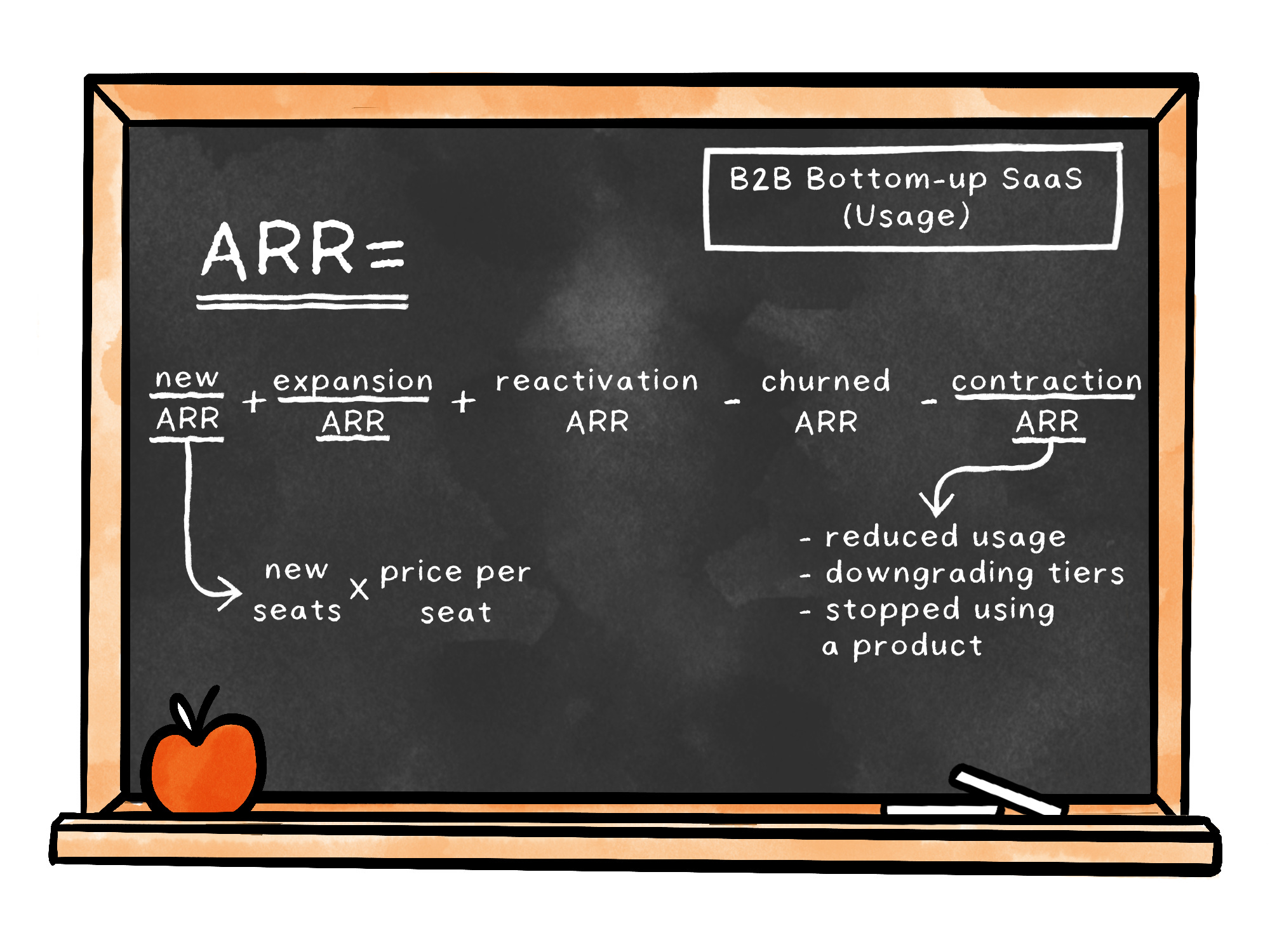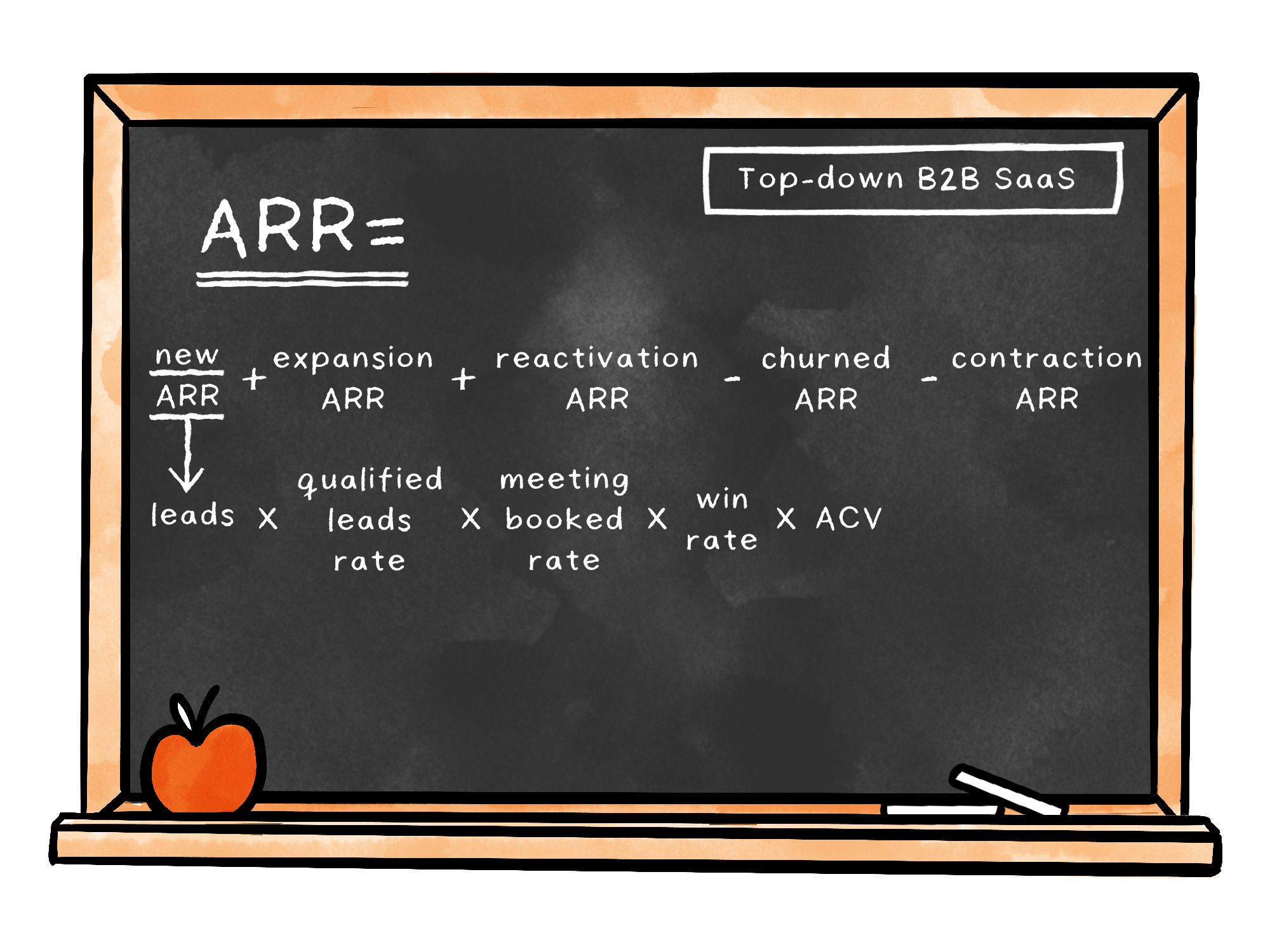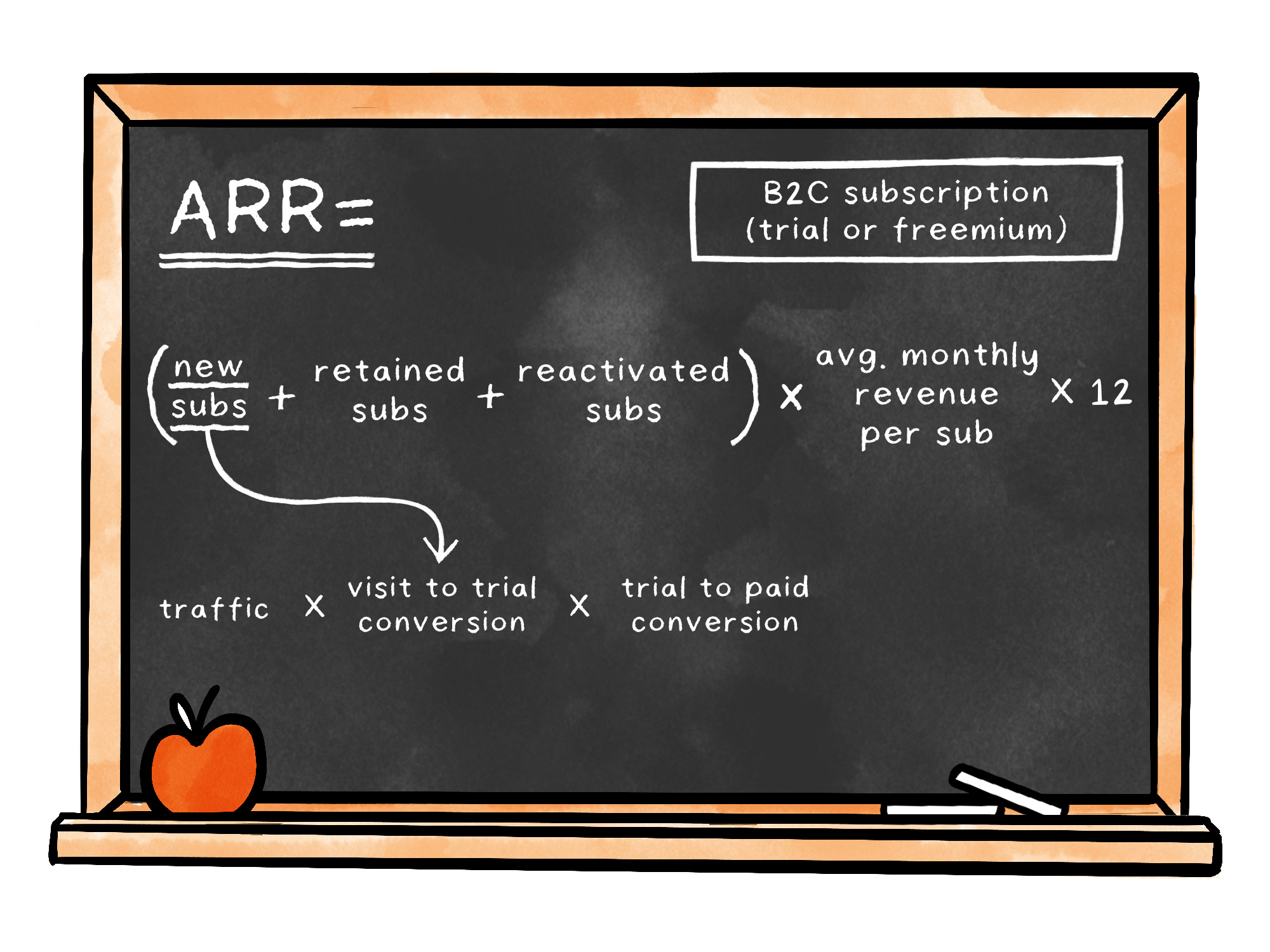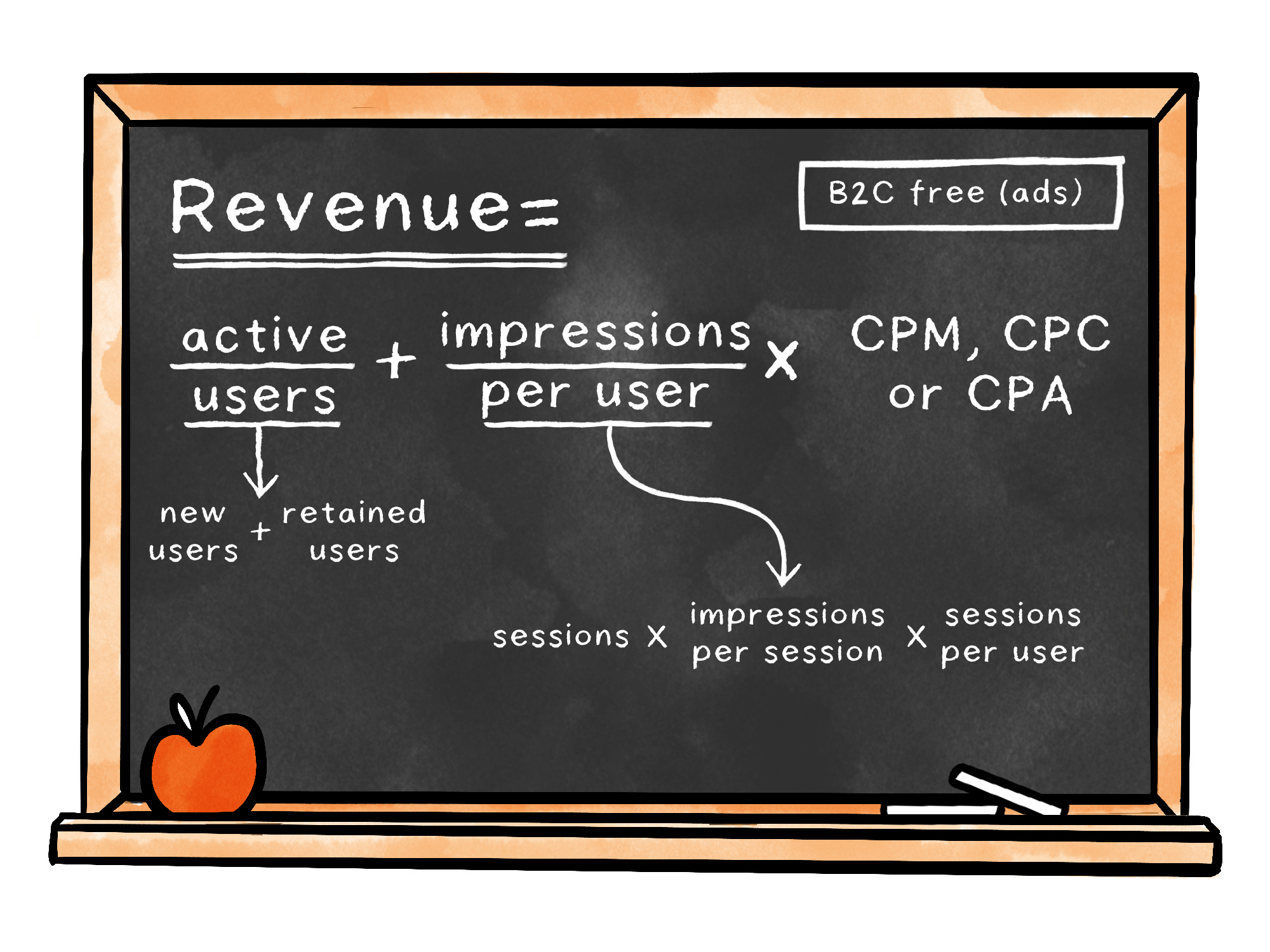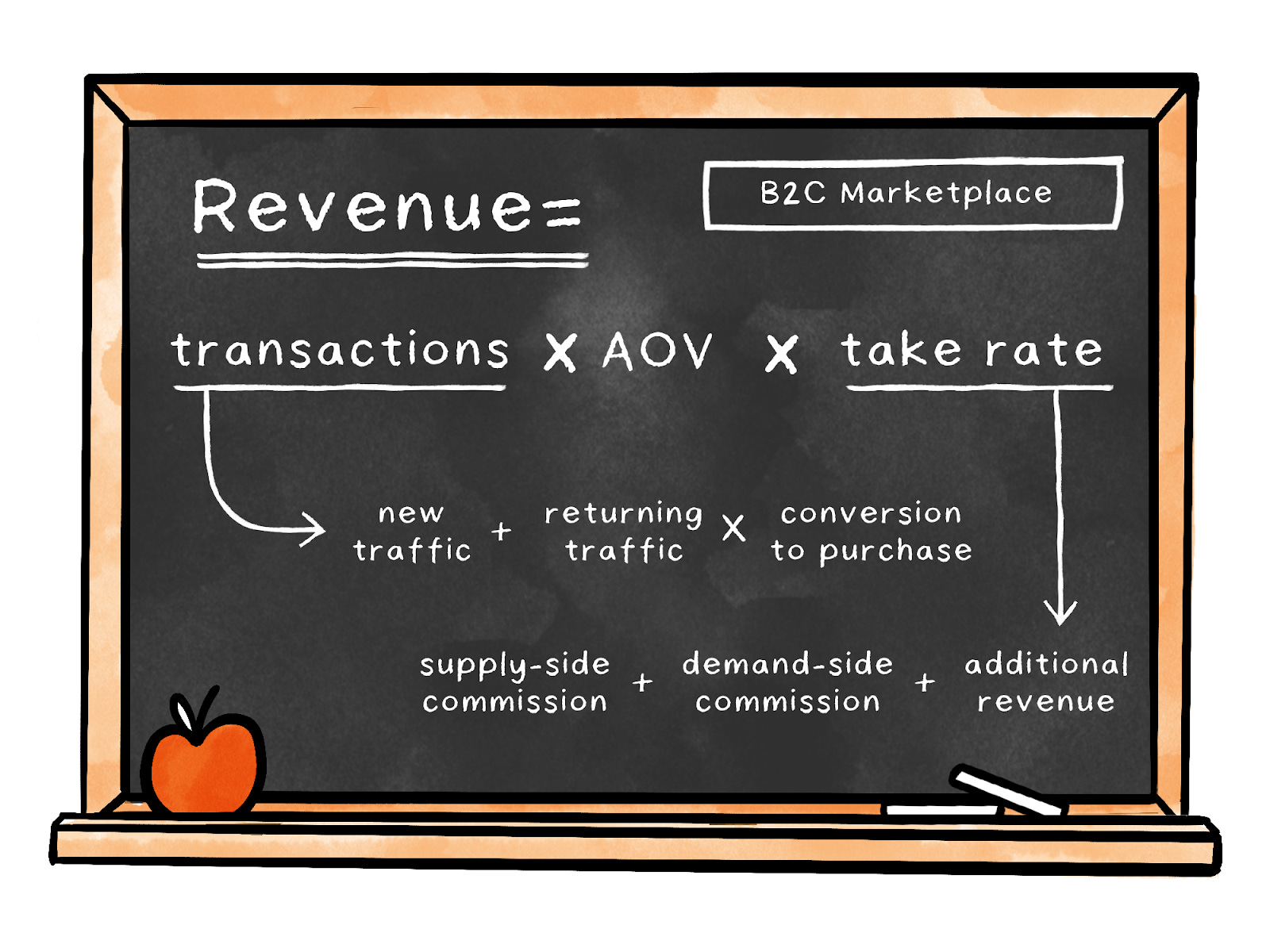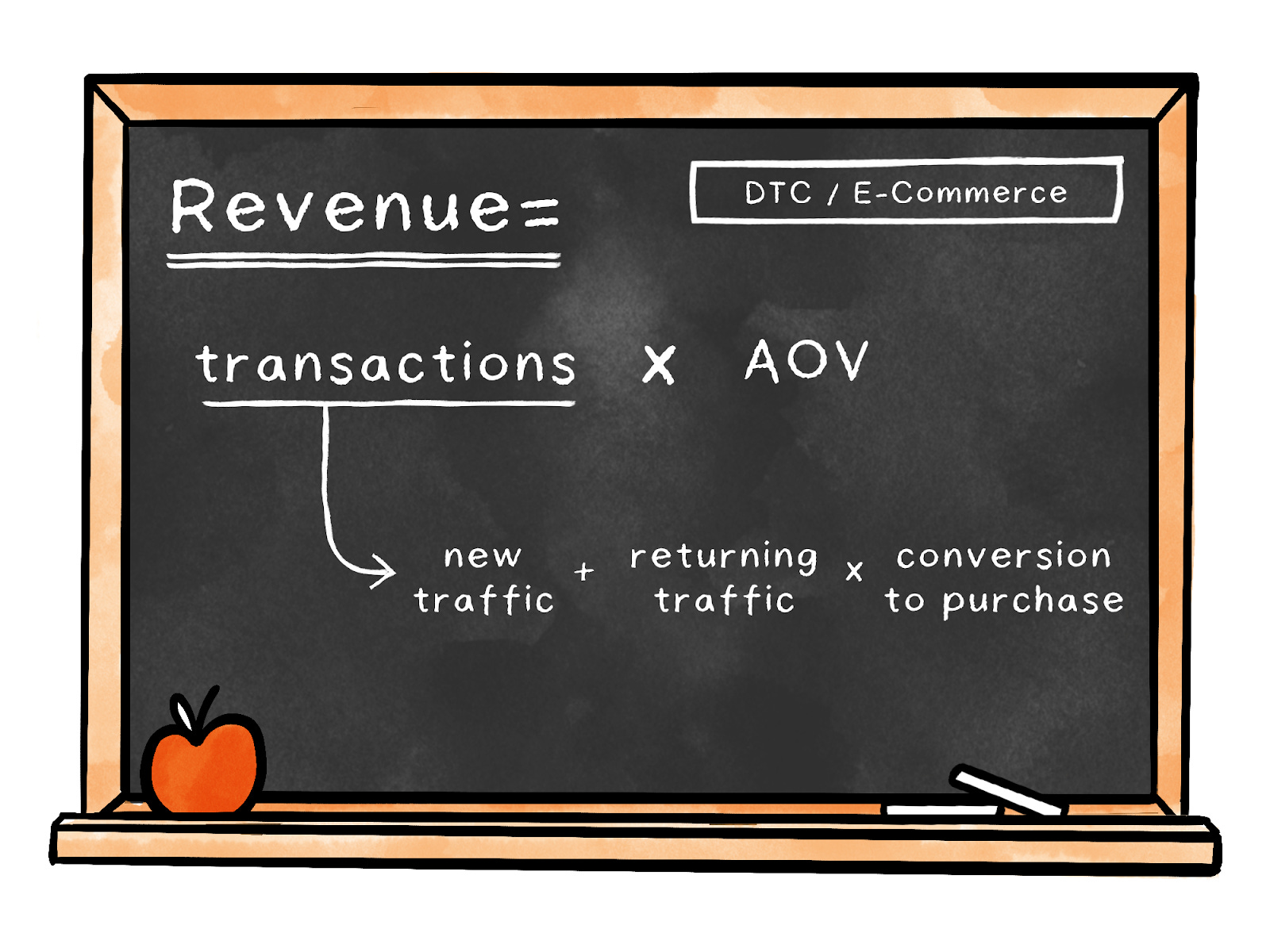How to describe your business as an equation
How to describe your business as an equationAnd why you don’t fully understand your business until you can👋 Hey, Lenny here! Welcome to this month’s ✨ free edition ✨ of Lenny’s Newsletter. Each week I tackle reader questions about building product, driving growth, and accelerating your career. If you’re not a subscriber, here’s what you missed this month: Subscribe to get access to these posts, and every post. Every business can be distilled into a simple equation. And until you can express your business as one, you don’t fully understand it. Figuring out this equation forces you to think about the inputs that drive your business, the outputs you want to prioritize, and how these variables interact. It also gives you a map for understanding which metrics you need to track, what factors drive the growth of your business, and, most importantly, where you have the most leverage to drive an outsize amount of impact (and thus where to assign your precious people and resources). To help you flesh out your own business equation, Dan Hockenmaier and I put together example equations for the most common tech business models:
First, a few disclaimers:
How to make the most of this post
A huge thank-you to Abi Noda (DX), Alex Bilmes (Endgame), Alexa Grabell (Pocus), Barry McCardel (Hex), Boris Jabes (Census), Colin Dunn (Visual Electric), Dom Wong (Pogo), Emily Kramer (MKT1), Jeremy Cai (Italic), May Habib and James Lee (Writer), Merci Victoria Grace (Panobi), Nels Gilbreth, Peter Kazanjy (Atrium), Reed McGinley-Stempel (Stytch), Rujul Zaparde (Zip), Whitney Steele (Descript), William Hicks (Magic Mind), and Zach Grannis for sharing feedback and advice on this post 🙏 Also, don’t miss Dan Hockenmaier’s newsletter, which is a must-read for anyone working on growth and marketplaces. B2B SaaS equationsA B2B SaaS business sells cloud-hosted software on a subscription basis (that’s what makes it software as a service—SaaS) to other businesses (that’s what makes it B2B). Examples include Snowflake, Slack, and Jira. B2B SaaS businesses typically monetize in one of two ways—per seat (e.g. Slack) or by usage (e.g. Datadog)—and grow in one of two ways—through a bottom-up motion (i.e. individual employees within a company discover the product on their own, as with Figma and Notion) or a top-down motion (i.e. salespeople sell the product into company leaders, as with Salesforce and Box). And though not exactly the same thing, a bottom-up growth motion is, in practice, essentially the same as a “product-led growth” (PLG) motion. Below, we’ll look at the three most common B2B SaaS business models, sharing both a simplified version of each business equation (as an image) and the full equation in the text under it. 1. Bottom-up B2B SaaS with seat-based pricingExamples: Figma, Slack, Zoom, Adobe Creative Cloud, Asana, Jira. ARR = New ARR + Expansion ARR + Reactivation ARR – Churned ARR – Contraction ARR
2. Bottom-up B2B SaaS with usage-based pricingExamples: AWS, Datadog, Twilio, Snowflake ARR = New ARR + Expansion ARR + Reactivation ARR – Churned ARR – Contraction ARR
3. Top-down (sales-led) B2B SaaSExamples: Snowflake, Box, Salesforce, Workday, Looker This category includes both seat-based and usage-based pricing and normally ends up as a predetermined negotiated annual contract. ARR = New ARR + Expansion ARR + Reactivation ARR – Churned ARR – Contraction ARR
B2C/consumer equationsConsumer businesses make a software product for individual consumers. Examples include Netflix, TikTok, and Google. Consumer products typically monetize in one of two ways—subscriptions (e.g. Duolingo, Spotify, Tinder) and ads (e.g. Instagram, Snap, YouTube). Below, we’ll look at these two models. B2C with subscription-based pricing (trial or freemium)Examples: Duolingo, Spotify, Tinder, Calm, Strava, MyFitnessPal ARR = MRR x 12 = (New subs + Retained subs + Reactivated subs) * Average monthly revenue per sub * 12
B2C with ads (i.e. free for the user)Examples: Instagram, Google, TikTok, Meta, Snap, Twitter Revenue = Active users * Impressions per user * CPM/CPC/CPA
Marketplace equationsA marketplace business facilitates transactions between buyers and sellers. Examples include Airbnb, DoorDash, Uber, eBay, and Faire. These businesses don’t own the supply (e.g. the homes, the cars, the restaurants) but instead make it easy for customers to find and purchase from these sellers. Marketplaces monetize primarily through a transaction fee and occasionally through a subscription fee. There are two types of marketplaces—B2C marketplaces, which cater to individual consumer customers (e.g. Airbnb, Uber), and B2B marketplaces, which cater to business customers (e.g. Faire, Pachama). B2C marketplacesExamples: Airbnb, Uber, DoorDash, Etsy, eBay Revenue = Transactions * AOV * Take rate
B2B marketplacesExamples: Faire, Amazon Business, Pachama, Novi Revenue = Transactions * AOV * Take rate
DTC/e-commerce equationFinally, we have direct-to-consumer (DTC) and e-commerce businesses, which sell a physical product to individuals. This includes companies like Warby Parker, Casper, Glossier, and Dollar Shave Club. Revenue = Transactions * AOV
Adding margin to your business equationFor any business with sufficiently high cost of sales, you can’t stop at revenue. What you’re really optimizing for is contribution margin, or what is left over after you take out all variable costs of a transaction. This is a key metric because it describes how much you have left over to reinvest in the business. It’s also how more margin-intensive businesses will typically ultimately be valued, as opposed to high-margin businesses, like SaaS, which are often valued on multiples of ARR. To apply margin to the equations above, all you have to do is calculate your average contribution margin rate (CM%) and multiply it by revenue. So for a DTC business, the formula would be:
There are two big components of cost to consider. Deducting only the first would give you a gross margin, and including the second gets you to contribution margin. Direct variable costs: These are costs that are directly driven by a transaction and are easy to attribute. For DTC models, this would include things like cost of goods sold, incentives, and shipping. For marketplace models, it would include things like payment processing fees, incentives, and defaults. Indirect variable costs: These are costs that are not directly driven by transactions but tend to increase as transactions increase, and include things like marketing and customer support. Calculating payback periodFor every business model here, one of the most important metrics that is not directly covered in these equations is customer acquisition payback period, i.e. the amount of time it takes for you to recoup the costs of customer acquisition. This is a better measure than LTV/CAC because it tells you how quickly you can invest in driving more growth. At the highest level, you can calculate payback period as CAC divided by annual contribution margin per customer. For example, if you have a CAC of $100 and an average annual contribution margin per customer of $120, your payback period would be 0.83 years, or 10 months. For certain business models, especially marketplaces, this equation gets more complicated. See “problem #2” in this essay for an explanation of how to calculate payback periods for marketplaces. Also, here are handy benchmarks for good and great payback periods. 📚 Further studyHave a fulfilling and productive week 🙏 👀 Hiring? Or looking for a new job?I’m piloting a white-glove recruiting service for product roles, working with a few select companies at a time. If you’re hiring for senior product roles, apply below. If you’re exploring new opportunities yourself, use the same button above to sign up. We’ll send over personalized opportunities from hand-selected companies if we think there’s a fit. Nobody gets your info until you allow them to, and you can leave anytime. If you’re finding this newsletter valuable, share it with a friend, and consider subscribing if you haven’t already. There are group discounts, gift options, and referral bonuses available. Sincerely, Lenny 👋 You're currently a free subscriber to Lenny's Newsletter. For the full experience, upgrade your subscription. |
Older messages
Taking control of your career | Ethan Evans (Amazon)
Sunday, January 14, 2024
Listen now (81 mins) | Brought to you by Sidebar—Accelerate your career by surrounding yourself with extraordinary peers | Sprig—Build a product people love | Arcade Software—Create effortlessly
How to be more innovative | Sam Schillace (Microsoft deputy CTO, creator of Google Docs)
Friday, January 12, 2024
Listen now (88 mins) | Brought to you by Teal—Your personal career growth platform | Vanta—Automate compliance. Simplify security | Ahrefs—Improve your website's SEO for free — Sam Schillace is
What to do if your product isn’t taking off
Tuesday, January 9, 2024
Seven steps you can take today to try to turn things around
The engineering mindset | Will Larson (Carta, Stripe, Uber, Calm, Digg)
Sunday, January 7, 2024
Listen now (77 mins) | Brought to you by DX—A platform for measuring and improving developer productivity | OneSchema—Import CSV data 10x faster | Vanta—Automate compliance. Simplify security. — Will
The UX Research reckoning is here | Judd Antin (Airbnb, Meta)
Thursday, January 4, 2024
Listen now (75 mins) | Brought to you by Teal—Your personal career growth platform | Vanta—Automate compliance. Simplify security | Ahrefs—Improve your website's SEO for free — Judd Antin has spent
You Might Also Like
#213 | The Next Big Thing, New Era for Fintechs, 7 Big Ideas & more
Sunday, January 5, 2025
Jan 5th | The latest from Footwork, F-Prime, Altimeter, A16Z Crypto, Craft Ventures, and others ͏ ͏ ͏ ͏ ͏ ͏ ͏ ͏ ͏ ͏ ͏ ͏ ͏ ͏ ͏ ͏ ͏ ͏ ͏ ͏ ͏ ͏ ͏ ͏ ͏ ͏ ͏ ͏ ͏ ͏ ͏ ͏ ͏ ͏ ͏ ͏ ͏ ͏ ͏ ͏ ͏ ͏ ͏ ͏ ͏ ͏ ͏ ͏ ͏ ͏ ͏ ͏ ͏
Let’s get this year started 🥂
Sunday, January 5, 2025
Starter Story Sunday Breakfast ͏ ͏ ͏ ͏ ͏ ͏ ͏ ͏ ͏ ͏ ͏ ͏ ͏ ͏ ͏ ͏ ͏ ͏ ͏ ͏ ͏ ͏ ͏ ͏ ͏ ͏ ͏ ͏ ͏ ͏ ͏ ͏ ͏ ͏ ͏ ͏ ͏ ͏ ͏ ͏ ͏ ͏ ͏ ͏ ͏ ͏ ͏ ͏ ͏ ͏ ͏ ͏ ͏ ͏ ͏ ͏ ͏ ͏ ͏ ͏ ͏ ͏ ͏ ͏ ͏ ͏ ͏ ͏ ͏ ͏ ͏ ͏ ͏ ͏ ͏ ͏ ͏ ͏ ͏ ͏ ͏ ͏ ͏ ͏ ͏
Scripts for difficult conversations: Giving hard feedback, navigating defensiveness, the three questions you shoul…
Sunday, January 5, 2025
How to better navigate difficult conversations, give hard feedback, run better meetings, and more with executive coach Alisa Cohn ͏ ͏ ͏ ͏ ͏ ͏ ͏ ͏ ͏ ͏ ͏ ͏ ͏ ͏ ͏ ͏ ͏ ͏ ͏ ͏ ͏ ͏ ͏ ͏ ͏ ͏ ͏ ͏ ͏ ͏ ͏ ͏ ͏ ͏ ͏ ͏
✅ 2025 is the year you build your business without wasting time ❌
Sunday, January 5, 2025
This is how you setup your store and sell your product in record time... Hi Friend , Every year, countless aspiring entrepreneurs fall into the same trap—constantly chasing the "next big thing
What’s 🔥 in Enterprise IT/VC #427
Saturday, January 4, 2025
The 15 year startup journey and implications for founders and investors ͏ ͏ ͏ ͏ ͏ ͏ ͏ ͏ ͏ ͏ ͏ ͏ ͏ ͏ ͏ ͏ ͏ ͏ ͏ ͏ ͏ ͏ ͏ ͏ ͏ ͏ ͏ ͏ ͏ ͏ ͏ ͏ ͏ ͏ ͏ ͏ ͏ ͏ ͏ ͏ ͏ ͏ ͏ ͏ ͏ ͏ ͏ ͏ ͏ ͏ ͏ ͏ ͏ ͏ ͏ ͏ ͏ ͏ ͏ ͏ ͏ ͏ ͏ ͏ ͏
😞 I was working a dead end job facing failure after failure...
Saturday, January 4, 2025
But I pushed through and kept going. Slowly, things started to click. Hi Friend , The first step towards getting somewhere is to decide you're not going to stay where you are. To help you get to
🚀 Google AI Updates, Top Tools, and Must-See Marketing Guides!
Friday, January 3, 2025
Explore the latest on Google's AI push, OpenAI's missed promises, and WWT's big acquisition. Plus, discover trending tools like SEOBot, Quick Mock, and expert tutorials to boost your growth
One year to change your life
Friday, January 3, 2025
Read time: 45 sec. one quick note before we dive in: our (insanely good) new years deal is almost over - snag it here before it's gone. -- It's that time of year when everyone posts the same
10words: Top picks from this week
Friday, January 3, 2025
Today's projects: LinkBoss • Travelnaut • Disney AI Poster Generator • SuprForms • GenYOU • Monibot • Crossworlds • Shy Editor • Helpello • Essembi • Page Roast • PowerDreamer 10words Discover new
Issue #133: Building $1K-$10K MRR Micro SaaS: Asset Management, AI-Powered Design of Marketing Graphics, AI Agent …
Friday, January 3, 2025
Build Profitable SaaS products!! ͏ ͏ ͏ ͏ ͏ ͏ ͏ ͏ ͏ ͏ ͏ ͏ ͏ ͏ ͏ ͏ ͏ ͏ ͏ ͏ ͏ ͏ ͏ ͏ ͏ ͏ ͏ ͏ ͏ ͏ ͏ ͏ ͏ ͏ ͏ ͏ ͏ ͏ ͏ ͏ ͏ ͏ ͏ ͏ ͏ ͏ ͏ ͏ ͏ ͏ ͏ ͏ ͏ ͏ ͏ ͏ ͏ ͏ ͏ ͏ ͏ ͏ ͏ ͏ ͏ ͏ ͏ ͏ ͏ ͏ ͏ ͏ ͏ ͏ ͏ ͏ ͏ ͏ ͏ ͏ ͏ ͏ ͏ ͏


